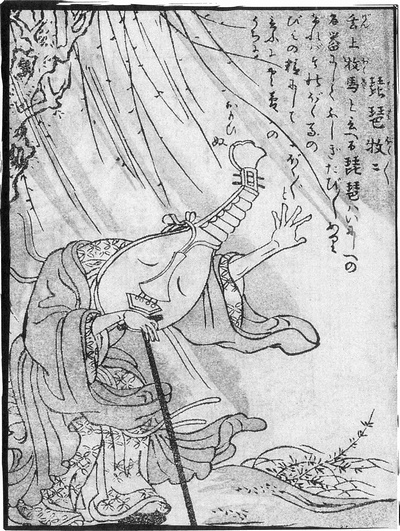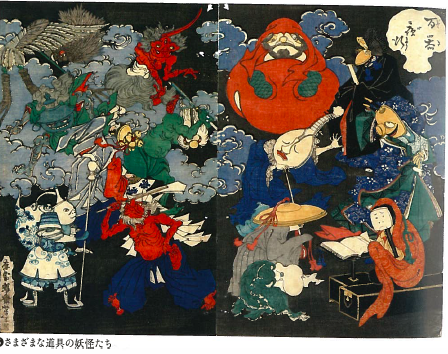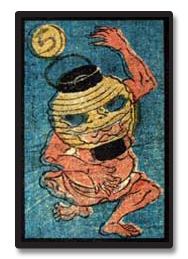Tsukumogami

image from Wikipedia Commons Project
A scene from the Muromachi emaki illustrated scroll, Hyakki-Yagyo-Emaki, Picture Scroll of the Hundred Demons' Night Parade). Here we see several ordinary household objects, including a straw raincoat and an umbrella (kasa), that have come alive and have joined the "demon" parade. Click here to compare the umbrella above with a modern obake kasa (ghost umbrella) toy and obake zori (ghost straw sandal) that have been strongly influenced by the manga/anime Gegege no Kitaru by Mizuki Shigeru (born 1922).

(image: Wikipedia Commons Project)
From Toriyama Sekien's Gazu Hyakki Tsurezure Bukoro, Illustrated Bag of a One Hundred Random Demons), ca. 1784. In this illustration ("Biwa-bokuboku") a very old, blind Biwa lute has come alive. Note that biwa players were traditionally blind. Sekien based this image on an original image in the Tsukumogami emaki.

This woodblock image includes a variety of tsukumogami, including a Biwa-bokuboku (copied from Sekien), a shamisen, a straw hat, a tea pot, a Daruma doll.

(image: Wikipedia Commons Project)
Chochin-bake (Paper Lantern Ghost): From a set of 19th century cards (karuta) with images of obake and the hiragana syllabary. The eyes and mouth come from tears in the paper lantern. We will see something like this again in the Kabuki ghost play, Yotsuya Kaidan.
Including various tsukumogami, Kamikiri (hair cutting demon), Rokurokubi (long necked yokai or ghost), Hajikkaki (no clue), and Yamawarara (one-eyed mountain boy)